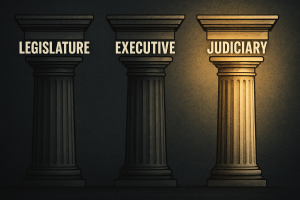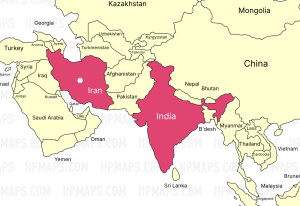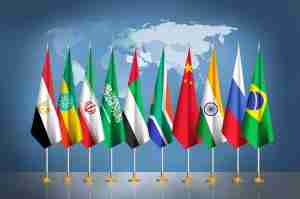1] Role of Technology in International Relations
Critical and Emerging Technologies (CETs) such as artificial intelligence (AI), semiconductors, quantum computing, and biotechnology are central to 21st-century statecraft. They are deemed “critical” because mastery in these fields is now integral to national security, economic growth, and geopolitical stature. Nations that lead in CETs can enhance their sovereignty and global influence, as technological power increasingly underpins military strength, economic competitiveness etc.
Because these emerging technologies can decisively tip the scales of military and economic power, they have become a new dimension of state power alongside traditional elements like armies or GDP. Global powers now invest heavily in domestic R&D, enforce export controls, and pursue techno-nationalist policies to maintain strategic superiority.
Interestingly, no single country dominates all CET sectors, creating a fragmented innovation landscape where partnerships become essential.
Accordingly, states forge tech-based alliances to co-develop systems, enhance interoperability, and protect sensitive knowledge. Simultaneously, technology denial regimes (e.g. NSG, MTCR etc.) and sanctions illustrate how tech is weaponised in strategic rivalry.
2] India–U.S. Tech Partnership: Motives and Strategic Logic
With such increasing role of technology in state power, the focus on technology cooperation in the India–U.S. strategic partnership has grown dramatically in recent years.
For India, a key motive is to accelerate its own technological and industrial modernization. India recognizes that to become a leading power and a $5 trillion+ economy, it cannot remain just a consumer of foreign tech – it needs to move up the value chain into high-tech manufacturing and innovation. Partnering with the United States offers India access to advanced technologies, capital, and best practices that can jump-start its domestic capabilities.
India also seeks to reduce dependency on Chinese imports and diversify from legacy ties with Russia. Strategically, India views technological capability as critical to countering Chinese assertiveness and maintaining deterrence in the Indo-Pacific.
For the United States, the motivations are equally compelling. Strategically, the U.S. sees India as a pivotal partner to counterbalance China’s rise. This logic is often framed as part of “free and open Indo-Pacific” strategy – essentially, empowering allies so that no single power (China) can dominate the region.
U.S. National Security Council officials have called India a “good bet” in a complex geopolitical world. India today has “a wide range of strategic capabilities” – from space and biotech to an emerging startup ecosystem. The U.S. wants to tap into India’s human capital and growing innovation base for mutual benefit.
Economically, India is a huge market and an alternative manufacturing hub. Moreover, U.S. companies and universities see India as a partner for joint R&D and as a source of talent.
There is also an ideological motive: the U.S. and India share a vision for technology that upholds openness and freedom. By collaborating with India, the U.S. hopes to tilt the global technology order toward a liberal, rules-based paradigm rather than one dominated by authoritarian norms.
Finally, from a geopolitical perspective, closer cooperation with India in tech also helps to lock in India’s strategic alignment with the U.S. Although India is not a formal U.S. treaty ally, American policymakers calculate that deep entanglement of the two will solidify India ’s position in the U.S.-led ‘coalition of democracies’.
3] iCET Initiative
Launched in January 2023 and announced in 2022, the Initiative on Critical and Emerging Technology (iCET) is led by the National Security Council (NSC) of both nations. It seeks to elevate the India-U.S. strategic tech partnership across multiple sectors.
Unlike past agreements limited to defence or trade, iCET is a comprehensive framework encompassing government, private sector, and academia. It is not a single project, but an overarching platform coordinating multiple streams of cooperation across critical tech sectors.
Under iCET, there is emphasis on co-development, rather than one-way transfers. This also underlines its departure from transactional models.
The NSAs of both countries steer iCET, with help of NSCs. This high-level stewardship ensures continuous political attention. It is unusual – and significant – that a tech partnership is led by security councils, reflecting the strategic importance.
iCET involves defence cooperation under Defence Industrial Cooperation Roadmap and Indus X Platform. Similarly, a new telecommunications dialogue (public-private) has been launched to discuss 5G/6G R&D, Open RAN (Radio Access Network) deployment, and regulatory alignment.
A notable one is the Indo-U.S. Quantum Coordination Mechanism – a formal channel bringing together industry, academia and government researchers from both countries to coordinate quantum science & technology efforts.
There are also university-level exchanges and STEM mobility programs under iCET.
4] Indo US TRUST Initiative
TRUST stands for Transforming the Relationship Utilizing Strategic Technology. It was officially launched during Prime Minister Modi’s visit to Washington in February 2025, as a follow-up to iCET. The vision remains the same, shared ambition to deepen collaboration across technology and innovation domains.
TRUST expands into new critical sectors—including critical minerals, semiconductors, pharmaceuticals, clean energy, and space. However, the focus on foundational domains such as AI, quantum technologies, biotechnology, and defence continues to remain a priority.
TRUST continues with high-level oversight from National Security Advisors.
5] Criticisms and Constraints
Despite optimism, TRUST faces structural challenges. There are concerns about unequal technology transfer, dependence on U.S. firms, and lack of clarity in IP sharing. Without enforceable mechanisms for joint ownership or open access to core technologies, India risks being locked into low-end roles.
Export control regimes like ITAR remain a hurdle, as do U.S. end-use monitoring expectations, which India finds intrusive.
The bureaucratic inertia and regulatory fragmentation in both countries can also contribute to slow progress. Political changes in either nation may alter priorities. The recent change from iCET to TRUST, reflects the influence of politics on such initiatives.
Further, the U.S. lawmakers also question India’s strategic consistency, citing its Russia ties and reluctance to align on certain international issues.
Even with access to tech, India’s absorptive capacity remains limited. The execution on the ground may falter without robust human capital and infrastructure.
From a regional perspective, TRUST might exacerbate security dilemmas. Rivals like China and Pakistan perceive it as a tilt in the regional balance, potentially fuelling arms races. To mitigate this, India and the U.S. must manage perceptions and maintain diplomatic transparency.
6] Theoretical Insights
TRUST signals the rise of tech-centric diplomacy. In such system, innovation, access and standards are as critical as military alignments. The global order is increasingly bifurcated into tech blocs, and TRUST positions India within the democratic sphere, albeit on its own terms.
Realism focuses on states’ pursuit of power and security in an anarchical world. From a realist lens, TRUST exemplifies balancing behaviour, with India and the U.S. aligning against a shared threat: China. It reflects interest-based cooperation rather than value-driven idealism. In fact, technology is a means to hard power – so such tech collaboration is fundamentally about increasing relative power (vis-à-vis China) by pooling resources.
Such cooperation also exemplifies smaller powers aligning with a distant great power against a nearer threat, as suggested by Kautilya’s Mandala theory.
Liberal institutionalism, would see it as win-win cooperation that creates absolute gains and complex interdependence between India and the U.S. From a neoliberal institutionalist perspective (Robert Keohane), even though the international system is anarchic, cooperation is possible and institutions (formal or informal) can mitigate mistrust. Liberals would argue that iCET is locking the U.S. and India into positive-sum interdependence, raising the cost of conflict and giving each a stake in the other’s success.
Constructivists focus on how shared identities, values, and norms shape state behaviour. From this angle, the partnership reflects a constructivist alignment of identities. The narrative of a “Techno-democracies vs Techno-autocracies” world. It can said to be a social construct that both India and the U.S. have started to internalize.
TRUST also exemplifies India’s ‘multi-alignment’ or ‘issue-based alignment’, where India suggests that it will align with multiple countries to secure India’s national interest.
The coming together of two large republics show an increasing role of technology in securing national interest. While the two have remained ‘estranged democracies’ over last few decades, we can hope that such initiatives will pave the way for ‘interlocked democracies’, shaping twenty-first century.













